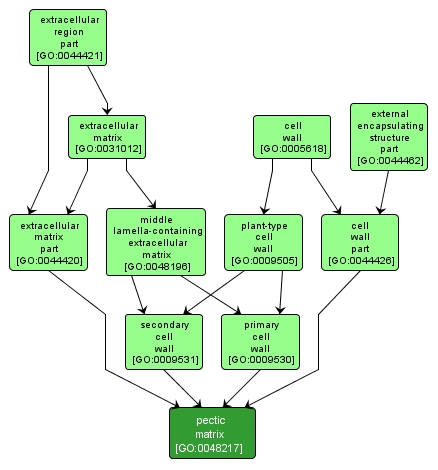| Desc: |
The gel-like pectin matrix consists of the interlinked acidic and neutral pectin networks that are further cross-linked by calcium bridges. Pectins consist largely of long chains of mostly galacturonic acid units (typically 1,4 linkages and sometimes methyl esters). Three major pectic polysaccharides (homogalacturonan, rhamnogalacturonan I and rhamnogalacturonan II) are thought to occur in all primary cell walls. |














